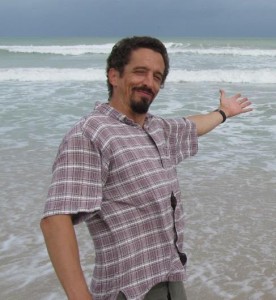NSU Newsroom
SharkBytes
Horizons
This version of NSU News has been archived as of February 28, 2019. To search through archived articles, visit nova.edu/search. To access the new version of NSU News, visit news.nova.edu.
This version of SharkBytes has been archived as of February 28, 2019. To search through archived articles, visit nova.edu/search. To access the new version of SharkBytes, visit sharkbytes.nova.edu.
Halmos College Hosted Physical Oceanography Seminar
 On Thursday, February 21, at 2pm, the Halmos College hosted a physical oceanography seminar at the Oceanographic Campus. Entitled, “Climatological LCS Patterns in the NW Gulf of Mexico And Heating of the Inner-Shelf by Warm Internal Tidal Bores” by Matt Gough, Ph.D.
On Thursday, February 21, at 2pm, the Halmos College hosted a physical oceanography seminar at the Oceanographic Campus. Entitled, “Climatological LCS Patterns in the NW Gulf of Mexico And Heating of the Inner-Shelf by Warm Internal Tidal Bores” by Matt Gough, Ph.D.
Gough is currently working as a postdoctoral researcher at the Naval Postgraduate School in Monterey, California. He completed his B.S. in Atmospheric Science from the University of California, Davis in Davis, California and went on to work as a wind power meteorologist for Kenetech Windpower in San Francisco. He took a brief detour from the physical sciences to undertake a few teaching positions before returning to school at San Francisco State University, where he completed his M.S. in Applied Geosciences. He went on to complete his Ph.D. in Applied Marine Physics at the Rosenstiel School of Marine and Atmospheric Science (RSMAS) in Miami, Florida. Much of Matt’s research has focused on processes responsible for mixing and transport in coastal regions such as tidal currents, upwelling dynamics, inertial oscillations, Lagrangian Coherent Structures, internal tidal bores, and rocky shoreline dynamics. When he’s not analyzing oceanographic data, Matt can be found in the ocean on a surfboard or at home strumming a guitar.